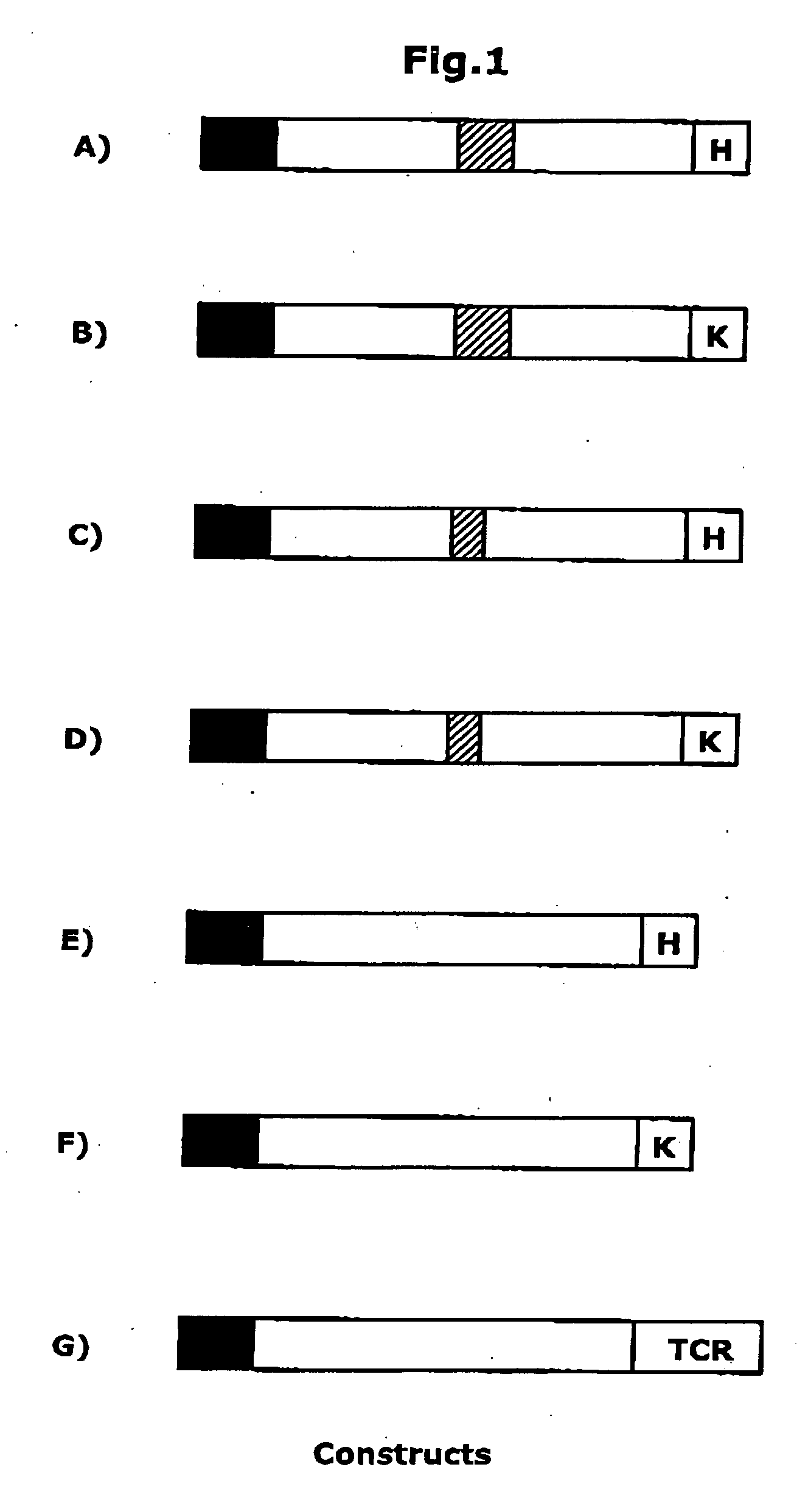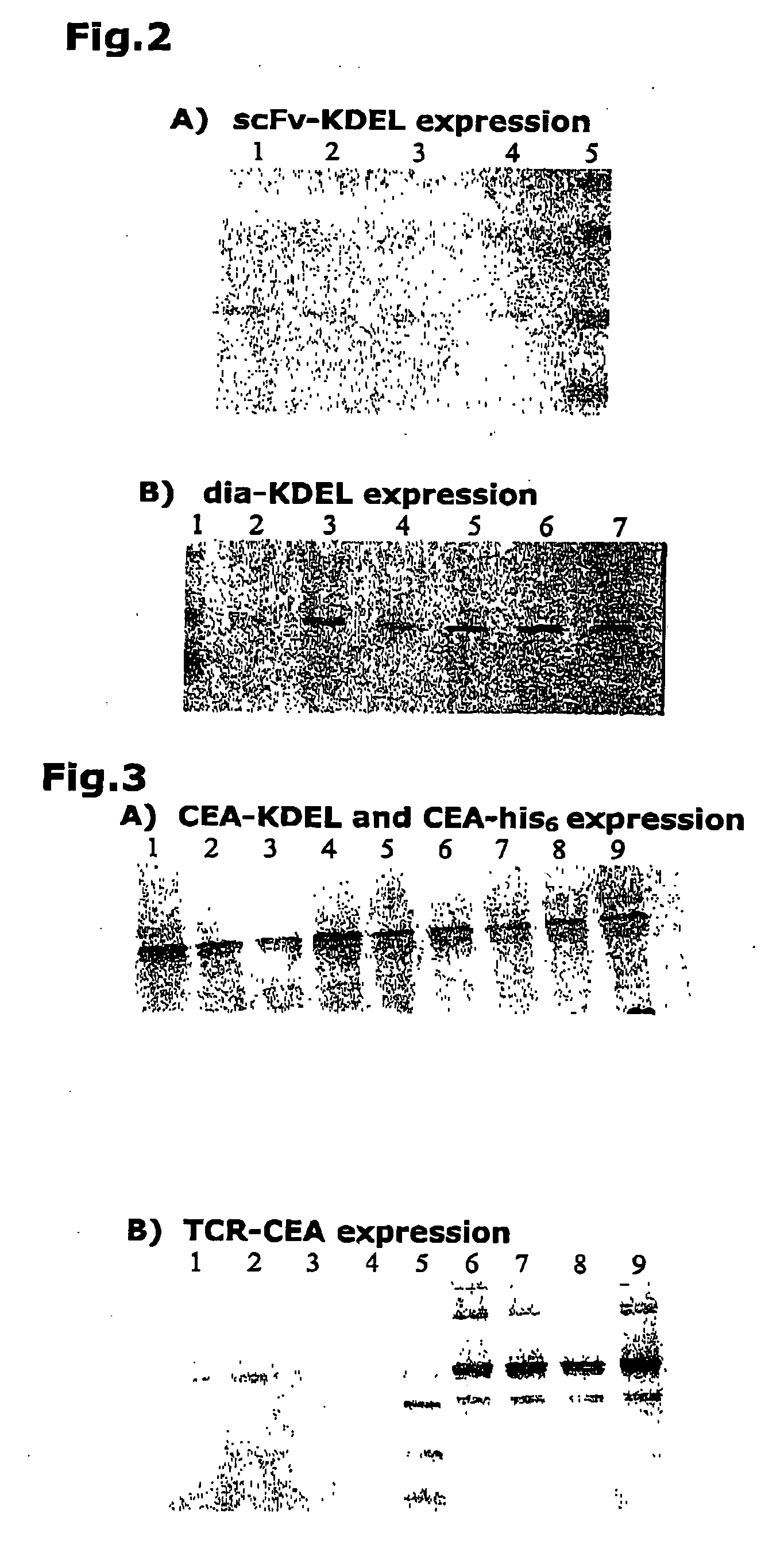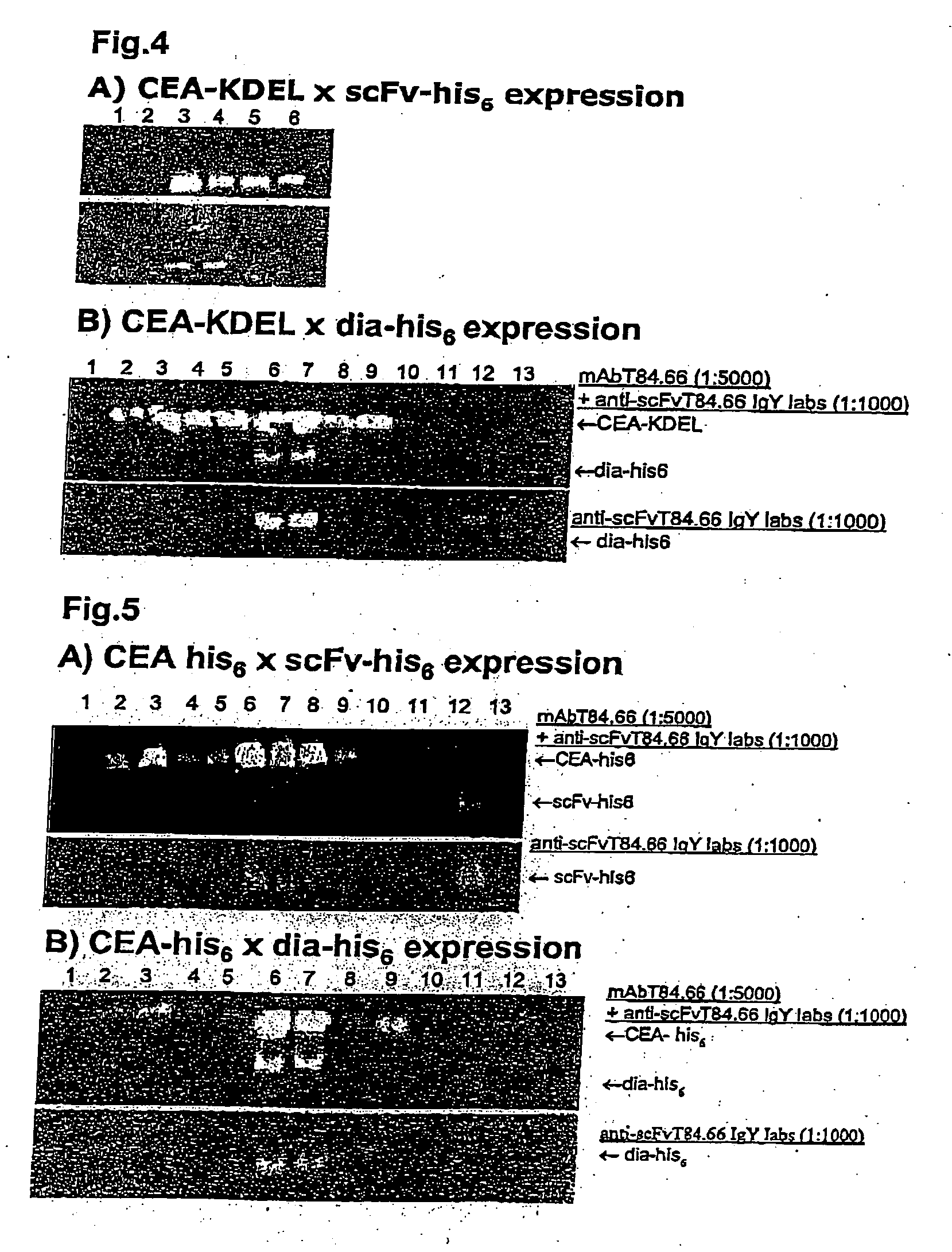Complex formation for the stabilisation and purification of proteins of interest
a protein and complex technology, applied in the field of complex formation for the stabilisation and purification of proteins of interest, can solve the problem of protein more susceptible, and achieve the effects of reducing the rate at which it is degraded, increasing the amount of target proteins, and facilitating phase partitioning
- Summary
- Abstract
- Description
- Claims
- Application Information
AI Technical Summary
Benefits of technology
Problems solved by technology
Method used
Image
Examples
example 1
[0066] Details of the procedures used to create the scFv, diabody and CEA expression constructs for transgenic plants and transient agroinfiltration assays can be found in Vaquero et al. 1999, Proc Natl Acad Sci USA 96: 11128-11133 and Schillberg et al. 2000, Molecular Breeding &, 317-326.
example 2
Crossing Strategy
[0067] As stated above, F1 transgenic plants expressing recombinant antibodies in concert with the specific binding partner CEA were produced by crossing transgenic parental (maternal and paternal lines; see table 2) lines expressing the components of the complex individually. For most experiments, CEA constructs were expressed in the maternal lines (far left column in table 2) and antibody constructs in the paternal lines (top row in table 2). Lines selected for crossing were chosen on the basis of sufficient protein accumulation, i.e. the appropriate protein had to be detectable. A grand total of 52 crosses, as shown in table 1 were performed. All plants were grown under identical conditions and none showed any changes in phenotype or other negative effects brought about by the expression of the recombinant proteins. For each cross, five F1 plants were maintained. Leaves were collected and stored at −20° C. until used for protein extraction and analysis.
example 3
Protein Extraction for Western Blot Analysis and Purification
[0068] Initially, proteins were extracted in PBS (pH 6.0) supplemented with 5 mM 2-mercaptoethanol (2ME). Aliquots (5 μl) of each extract were loaded onto 13.5% polyacrylamide gels for further analysis. However the extraction appeared to be incomplete and a different approach was used in further experiments. This approach featured a strongly denaturing buffer containing 9 M urea, 4.50 / % SDS, 7.50% 2ME and 75 mM Tris HCl (pH6.8). From these extracts, 2 μl aliquots were loaded onto polyacrylamide gels.
[0069] For western blot analysis, the gels were blotted onto nitrocellulose. Detection was mediated using either IgY-anti-scFvTS4.66 (1:1000 dilution) and horseradish peroxidase-conjugated rabbit anti-chicken antibodies (rabbit anti-chicken-HRP) (1:5000 dilution) to detect the antibody, or mAbT84.66 (1:2000 dilution) and goat anti-mouse-HRP (1:5000 dilution) to detect the CEA. Alternatively, the blots were simultaneously prob...
PUM
| Property | Measurement | Unit |
|---|---|---|
| Stability | aaaaa | aaaaa |
Abstract
Description
Claims
Application Information
 Login to View More
Login to View More - R&D
- Intellectual Property
- Life Sciences
- Materials
- Tech Scout
- Unparalleled Data Quality
- Higher Quality Content
- 60% Fewer Hallucinations
Browse by: Latest US Patents, China's latest patents, Technical Efficacy Thesaurus, Application Domain, Technology Topic, Popular Technical Reports.
© 2025 PatSnap. All rights reserved.Legal|Privacy policy|Modern Slavery Act Transparency Statement|Sitemap|About US| Contact US: help@patsnap.com



